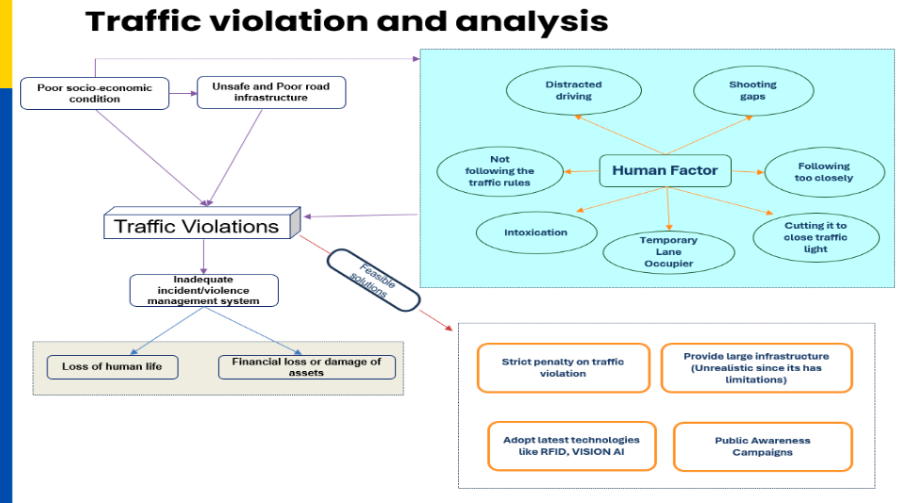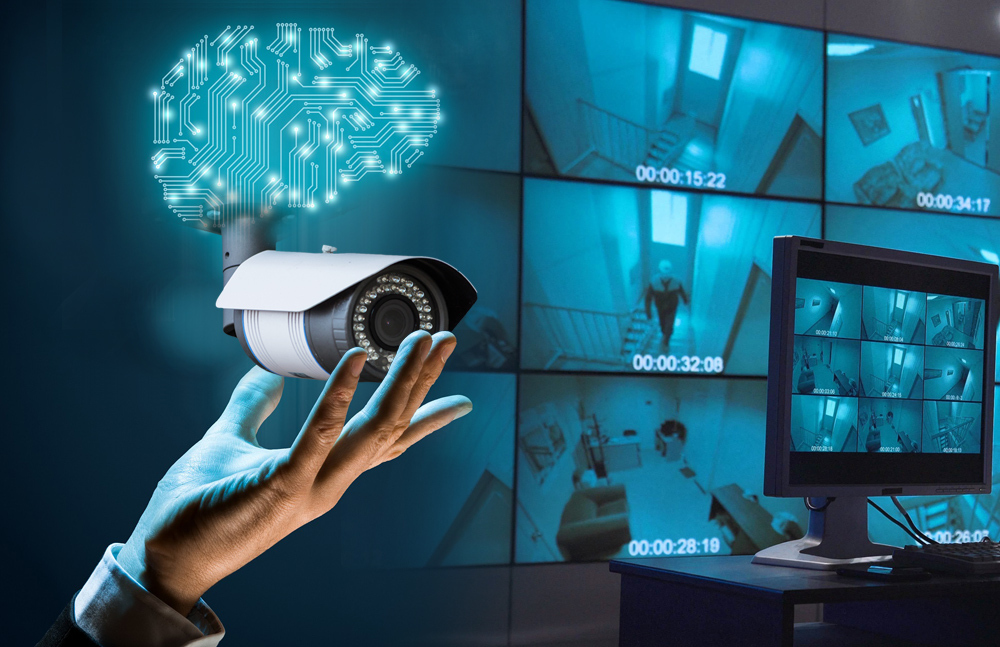As India’s cities continue to grow faster than many Asian countries, law enforcement agencies are facing mounting pressure. Rapid urbanization, combined with a rising population and an increasing number of vehicles, has created a complex environment for police forces in cities like Delhi, Mumbai, and Bengaluru. Between 2018 and 2022, India witnessed over 500,000 fatalities, with approximately 92% occurring in urban areas. Major cities are struggling with severe traffic violations and congestion, which directly contribute to fatalities, rising crime rates, and the difficulty of maintaining public order in overcrowded, fast-moving environments. The challenges of urban infrastructure—narrow roads, chaotic traffic, and insufficient public transportation—complicate policing efforts even further.
Additionally, the burden on law enforcement is intensified by India’s police-to-population ratio, which stands at 1:800, far below the global standard of 1:450. In practice, this means that police officers are often tasked with managing hundreds or even thousands of individuals per shift. As a result, response times slow, workloads increase, and officers experience burnout. In high-pressure situations, officers are expected to balance multiple roles—traffic management, crime prevention, and investigation. Traditional policing methods, which rely heavily on manpower, are no longer sufficient to meet the growing demands of urban life. For Easiest understanding of the how traffic Voilation is interconnected with its factor are shown below.

Vision Analytics: Transforming Urban Policing
As part of India’s Smart City Mission, technologies like Vision Analytics have the potential to transform law enforcement. Vision Analytics leverages AI technologies such as machine learning, computer vision, and real-time data analysis to streamline policing operations. This technology automates critical processes, improves operational efficiency, and enhances overall safety.
Here’s how Vision Analytics can impact various aspects of urban safety:
| Use Case | Impact |
| Monitor Traffic | Identifies traffic bottlenecks and congestion. Tracks vehicles involved in illicit activities like smuggling or hit and run accidents. Detects wrong way driving and sends real-time alerts to prevent accidents. |
| RealTime Crime Detection | Enables faster emergency response. Provides immediate alerts for crime prevention. |
| Prevent Traffic Violations | Reduces human error. Automates fines and penalties, ensuring timely enforcement. |
| Track Criminal Activities | Tracks suspicious vehicles in real-time. Aids in investigations by providing valuable data. |
| Identify Road Hazards | Prevents accidents by alerting authorities. Reduces roadkill and helps fix road damage faster. |
| Monitor Public Spaces | Prevents crimes before they escalate. Enhances safety by alerting police to potential threats. |
| Automate Traffic Law Enforcement | Reduces physical patrol needs. Ensures consistent enforcement of traffic laws. |
| Support Emergency Services | Reduces response time for emergency services. Improves coordination between law enforcement and emergency teams. |
| Monitor Pedestrian Safety | Increases pedestrian safety. Alerts pedestrians and traffic authorities to unsafe crossings. |
Building the Infrastructure for Vision Analytics
For Vision Analytics to reach its full potential, India must strengthen its technological infrastructure. Key steps include:
- High-Resolution Surveillance Systems: Installing cameras that can capture high-quality footage to monitor urban areas effectively.
- Data Storage and Processing: Ensuring systems can process large volumes of data in real-time for rapid decision-making.
- Training for Police Personnel: Equipping law enforcement officers with the necessary skills to operate AI-driven tools and interpret the data generated.
- Reliable Data Networks: Establishing strong and consistent networks for seamless data transmission between surveillance systems and central control rooms.
To visualize how Vision Analytics works, think of it as an interconnected network where each component, like real-time monitoring, AI surveillance, and automated law enforcement, works together to improve urban safety. Whether it’s optimizing traffic flow, detecting wrong-way driving, or tracking suspicious vehicles, the system continuously processes data, sends alerts to officers, and enables quicker responses. All components complement each other, making Vision Analytics a powerful tool for preventing crimes and accidents.
Below is an image that shows how these components are interrelated, helping to create a safer environment for everyone.

Key Benefits of Vision Analytics
- Responsiveness: Vision Analytics enables real-time monitoring and instant alerts, allowing law enforcement to respond quickly to incidents. This helps prevent crimes and accidents before they escalate.
- Auditability: The system offers a transparent and auditable record of all activities, making it easier to track, review, and ensure accountability in law enforcement operations. This improves oversight and supports compliance.
- Data-Driven Analytics: By continuously collecting and analyzing data, Vision Analytics provides actionable insights. These data-driven analytics enable law enforcement to make informed decisions, improving crime prevention, traffic management, and urban safety strategies.
- Enhanced Public Safety: Vision Analytics helps detect suspicious activity and hazardous conditions in real time. This reduces response times and allows for proactive intervention in high-risk situations, ultimately improving public safety.
Challenges in Implementing Vision Analytics in India
While Vision Analytics presents significant potential, several challenges exist. However, these challenges can be addressed with careful planning and execution:
- Infrastructure Limitations: Many cities lack the necessary surveillance cameras and internet infrastructure. Phased investments can bridge these gaps, allowing cities to adopt AI-powered systems effectively.
- Financial Constraints: The initial cost of AI systems may be high, but a cost-benefit analysis shows that long-term savings through improved efficiency and reduced crime outweigh the investment.
- Training Gaps: Many officers may lack the technical expertise to operate AI-driven tools. However, proper training programs can address this skill gap, enabling officers to fully leverage the power of Vision Analytics.
- Privacy Concerns: Surveillance technologies, especially facial recognition, raise privacy issues. Implementing transparent policies and strict data protection regulations will help build public trust and ensure the responsible use of data.
- System Integration: Integrating AI with existing law enforcement systems can be complex. Focusing on interoperability will ensure seamless integration and maximize the benefits of AI technologies.
Real-World Impact of Vision Analytics
Despite these challenges, Vision Analytics has already proven successful in cities globally. For example, in China’s Smart City Initiative, AI systems integrated with surveillance cameras monitor traffic and detect crimes in real time. This proactive approach has reduced road accidents and improved public safety.
In India, imagine a crowded market in Noida. A man snatches a woman’s mobile phone and tries to flee. Thanks to Vision Analytics, the AI detects the suspicious movement and immediately alerts nearby officers. Within moments, the police respond and intercept the thief before he can escape. The woman’s phone is returned, and the thief is arrested—all thanks to the real-time power of AI-driven technology.
Valiance Solutions: Pioneering Vision Analytics
Valiance Solutions has established itself as a prominent name in computer vision, pioneering advancements that address modern challenges. Its innovative and adaptable solution, CivicEye, is revolutionizing urban management. Designed with exceptional configurability and scalability, CivicEye allows tailored algorithms to be deployed for specific tasks. For example, one camera can be programmed to detect wrong-way driving, while another focuses on tracking vehicles linked to criminal activities.
Although CivicEye has already enhanced traffic management and public safety, Valiance Solutions remains dedicated to expanding its capabilities. By continuously evolving its AI-driven technology, the company ensures that CivicEye keeps pace with the ever-changing demands of urban environments, fostering smarter, safer, and more efficient cities.
Rajneesh Singh is a seasoned professional with experience in ship operations. He has a comprehensive marketing, sales, and process optimization background within the maritime industry. Rajneesh is dedicated to enhancing operational efficiencies and implementing effective strategies to drive success. Alongside his maritime expertise, he has a keen interest in fintech, staying abreast of the latest developments and innovations in financial technology. His diverse skill set and passion for continuous learning make him a valuable asset.




